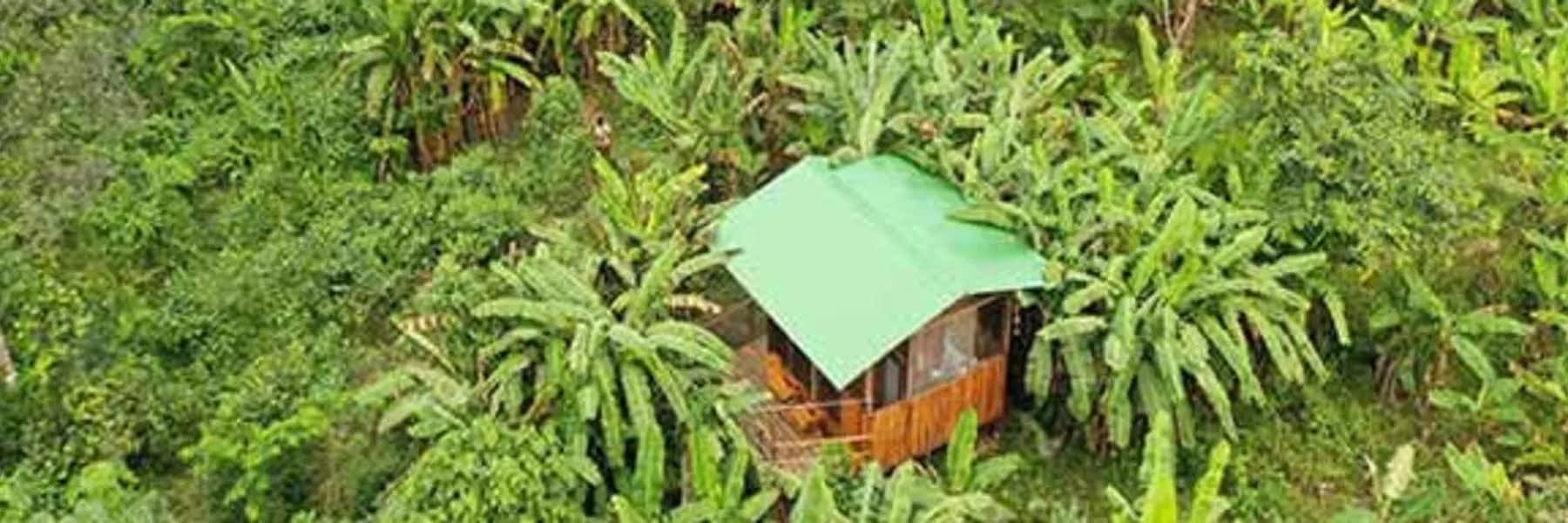An area of the world that draws attention globally due to its ability to make or break climates, the Amazon Rainforest is shared by eight developing nations. While these countries can become rich from its resources, doing so depletes the benefits it provides to the Earth. A catch 22 in the most severe form. In 2021, my fourth year of living in Cusco, Peru, I had the opportunity to visit Tambopata, a protected area deep into the Amazon Rainforest. I decided I didn’t just want to take a tourist route from points A to B and back; I wanted to see and experience the forest as a researcher, scientist, and someone interested in preserving the natural medicine of the Earth.
With the help of Yes2Peru, a small organization that helps connect people with volunteer work and travel, I got in contact with a scientist living and working within the rainforest—Raul, a university scientist from Lima specializing in the study of monkeys. His life work explored the patterns of migration, procreation, and habits (or lack thereof) caused by many environmental changes within families of monkeys. Working with small organizations, Raul has helped fund his project by hosting visitors from time to time. I was his guest in the first part of May 2021.
Get Your Free Report on the World's Best Places to Retire in 2025
Get Your Free Report on the World's Best Places to Retire in 2025
Simply enter your email address below to sign up for our free daily postcard e-letter and we'll also send you a FREE report on The World's Top 10 Retirement Havens for 2025.

By submitting your email address, you will receive a free subscription to IL Postcards and special offers from International Living and our affiliates. You can unsubscribe at any time, and we encourage you to read more about our Privacy Policy.
Preparing for the Expedition
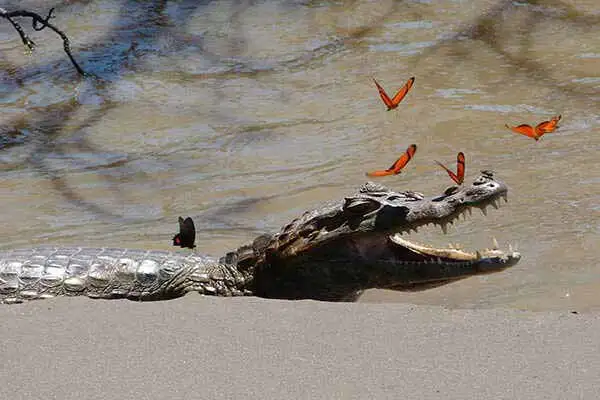
I chose to set off for the Amazon in May as the rainforest can be extremely wet during the rainy season, February through April. I wanted to make sure I traveled “light” but without leaving out my essentials. I took breathable long-sleeve shirts, long pants, a towel, waterproof boots, shower slippers, swim trunks, shorts, and other obvious garments. The goal was comfort and protection from insects such as mosquitos. I brought a small solar charger for my cellphone, a GoPro camera, a flashlight, and a headlamp. Other essentials bought from a pharmacy for less than $10 included powder supplements of essential vitamins and minerals to add to my water, insect repellant, natural shampoo, and soap without harmful chemicals as the water source returns directly to the river, and sunscreen.
In all, I had a backpack and a gym-style bag ready for seven days and six nights. I booked a very reasonable hotel for my last night in Puerto Maldonado to unwind and see parts of the town before heading back to Cusco.
From Cusco to the Jungle
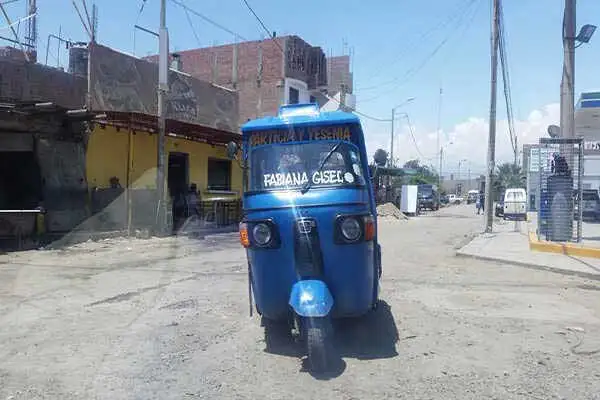
My travel day started at 5 a.m. on the first Monday in May 2021. Again, with help from my friends at “Yes2Peru,” I had four options to make the 300-mile, 9- to 14-hour trip from Cusco to Tambopata. The fastest option is to fly, but with this route you miss the adventure of travel through some of the most breathtaking countryside. A double-decker tour bus is another option, but knowing it could take 12 to 14 hours was too much for me.
I chose the semi-private, four-door sedan option, which took 8.5 hours in total, with a few stops and a riverboat trip included. There are several car-for-hire options in Cusco, private or semi-private; from Cusco to Lima, Cusco to Puerto Maldonado, and many other destinations. A four-door sedan with a driver will transport about four passengers to many different cities. In my case, we were headed to Puerto Maldonado. For just $35, I called the company suggested two days prior and they picked me up at my apartment at 5 a.m. The journey began.
Along the way, we picked up two more individuals, also headed toward Puerto Maldonado. While the road for the entire trip is paved, there are areas, depending on the season, that may be damaged due to heavy rains or floods. So, what does this mean? Should the road be undrivable, they will close that part of the road and a detour is established. The local governments are exceptionally good at keeping the road to and from the jungle repaired and in good order.
Driving through the longest continental mountain range in the world into the fertile jungle area is an experience one can’t express with mere words. Waterfalls, wildlife, fresh air, and the obvious cultural differences within that part of Peru—the stark contrast is amazing.
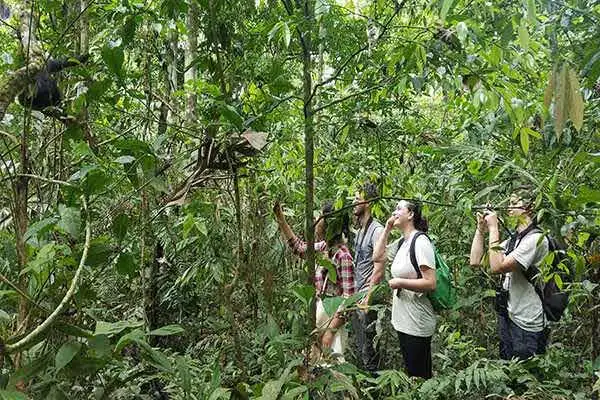
We stopped a few times along the way for snacks and restroom breaks. We switched cars about five hours into the journey in a city called Mazuko. Considered the gateway into the jungle region, Mazuko is where the reserve or protected land begins. Known for its fresh produce and textile commerce from the jungle region, Mazuko is a hub for many Peruvian and international workers.
During the short break, I enjoyed two homemade empanadas with a bottle of water, all for under $4. These empanadas are found throughout Peru. Another great option the vendor had was fresh avocado sandwiches and freshly cut fruit. Avocado, or palta, and the fresh fruit are grown only a few hours away. The journey continued after a short 15-minute break. The vehicle was changed to an SUV while the first driver returned to Cusco with other passengers. I enjoyed the front seat and was able to snap a few good photos entering the jungle region.
The towns along the way were visibly less well-off than the more established Mazuko. The area is known for gold mining and transitory workers. After seeing this area in documentaries, it was remarkably interesting to see it first-hand. Peru is currently in the process of attempting to put more regulations on these areas to make it safer for workers and to protect the terrain it has ruined over time.
Taking a Riverboat to a Rainforest Ecolodge
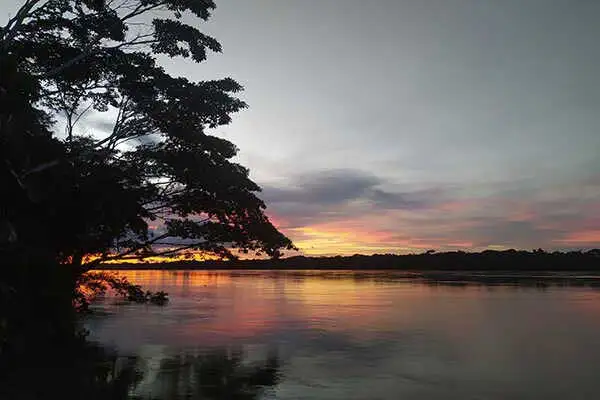
I arrived at Puerto Maldonado around 1:30 p.m, a little over three hours since we had left Mazuko. Raul was there to meet me, and we took a tuk-tuk or mototaxista to the port. It was about a 10-minute drive for less than a dollar. The other options in Puerto Maldonado for public transport are private vans or driving on the back of a motorcycle with a registered driver. Puerto does not allow in-city automobile taxis to avoid congested roadways, as well as the extra pollution. All their “moto” drivers are registered and licensed with the city municipality.
We had a typical barbeque or parrilla lunch overlooking the river. The restaurant, La Maloca, had open-air seating and served a very reasonable lunch. Here one can find typical plates from the area. With Brazil and Bolivia only minutes away, the cuisine had hints from each country. I tried the juane, a typical dish of rice, meat, olives, and eggs wrapped in plantain leaves and cooked on the grill to perfection. I also could not resist their grilled chicken, and washed it all down with a freshly squeezed camu camu juice—a fruit grown in the Amazon and known for its vitamin C quantity. (Vitamin C is suggested to ward off annoying mosquitos while in the jungle.)
Get Your Free Report on the World's Best Places to Retire in 2025
Get Your Free Report on the World's Best Places to Retire in 2025
Simply enter your email address below to sign up for our free daily postcard e-letter and we'll also send you a FREE report on The World's Top 10 Retirement Havens for 2025.

By submitting your email address, you will receive a free subscription to IL Postcards and special offers from International Living and our affiliates. You can unsubscribe at any time, and we encourage you to read more about our Privacy Policy.

After lunch, I embarked on a motorized riverboat, or peke peke, due east toward Bolivia. These riverboats are built thin to maneuver the waters and debris found in this area. Raul’s land is located just beyond Monkey Island on the south of the riverbank and a few miles from the border. Once we arrived, I was pleasantly surprised to discover that his entire camp was solar powered. The camp has three buildings and a water tower. The first building was the main hub with a small research lab, kitchen, dining area, and library. The other two buildings were lodging. Each building was equipped with solar panels. We had light, power, hot water, and water from a water filtration system. It really is a self-sustaining environment in the middle of the Amazon Rainforest. Internet/Wi-Fi was almost non-existent, but a satellite phone was available for emergencies.
A Typical Day on Monkey Island
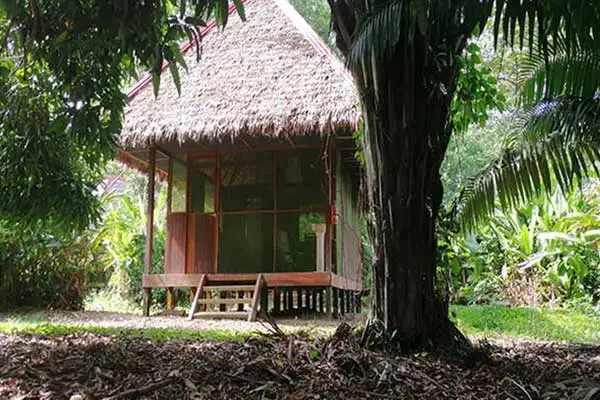
Our days started around 7 a.m. The sounds of birds and wildlife made for a natural alarm clock once the sun peeked over the trees. Raul’s team had Peruvian coffee and breakfast ready by 7:30 a.m. Breakfast consisted of homemade bread, palta, eggs, fresh fruits, and coffee. We were ready to hit the trails by 8:15 a.m. As the sun becomes extremely hot around 2 p.m, we always planned to be back by 1 p.m. His land extended into the jungle for about 12.43 miles and we trekked about four miles one way each day. During our exploration, we cleared trails with machetes, searched for signs of wildlife activity, and logged data along the way.
Throughout my stay I was fortunate enough to see various wildlife, including the caiman alligator, macaws, toucans, and many other birds I was unable to identify as well as the tapir, peccary, and many species of monkey studied by Raul and his team. Each day was a different adventure.
Deciding to go away from the typical tourist adventure gave me an authentic experience of a lifetime. I participated in daily cooking, clearing trails, the gathering of research material, and the general upkeep of the facility. Living in Peru made this possible with my friends at “Yes2Peru.” A chance of a lifetime I will always remember.
Images copyright: ©Marco Boyd
Related Articles
An Overview of Traditions and Culture in Peru
